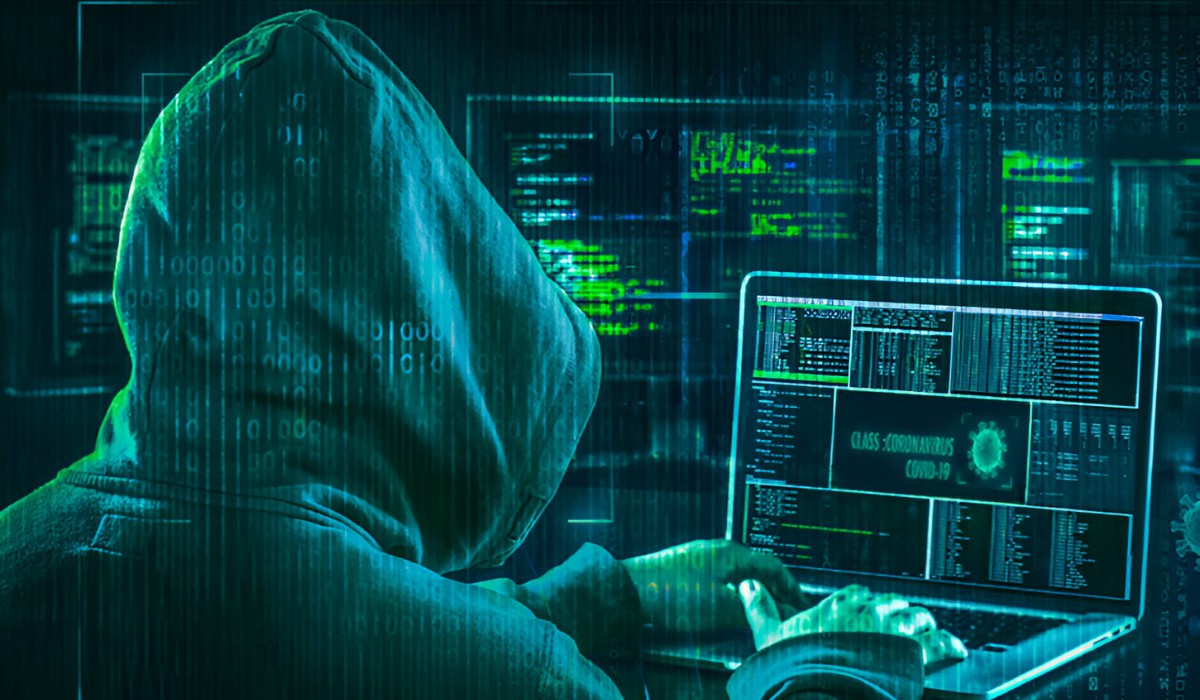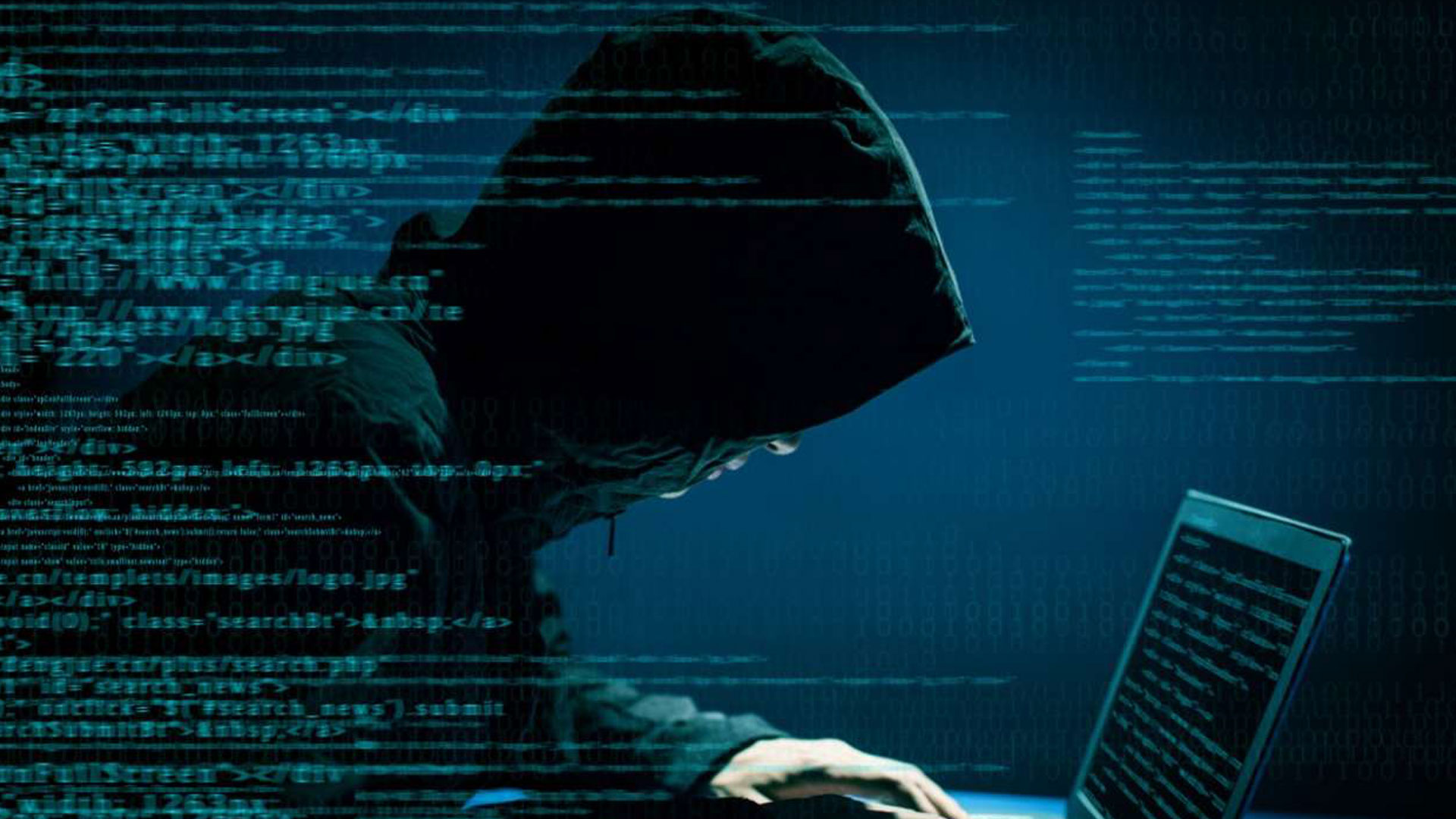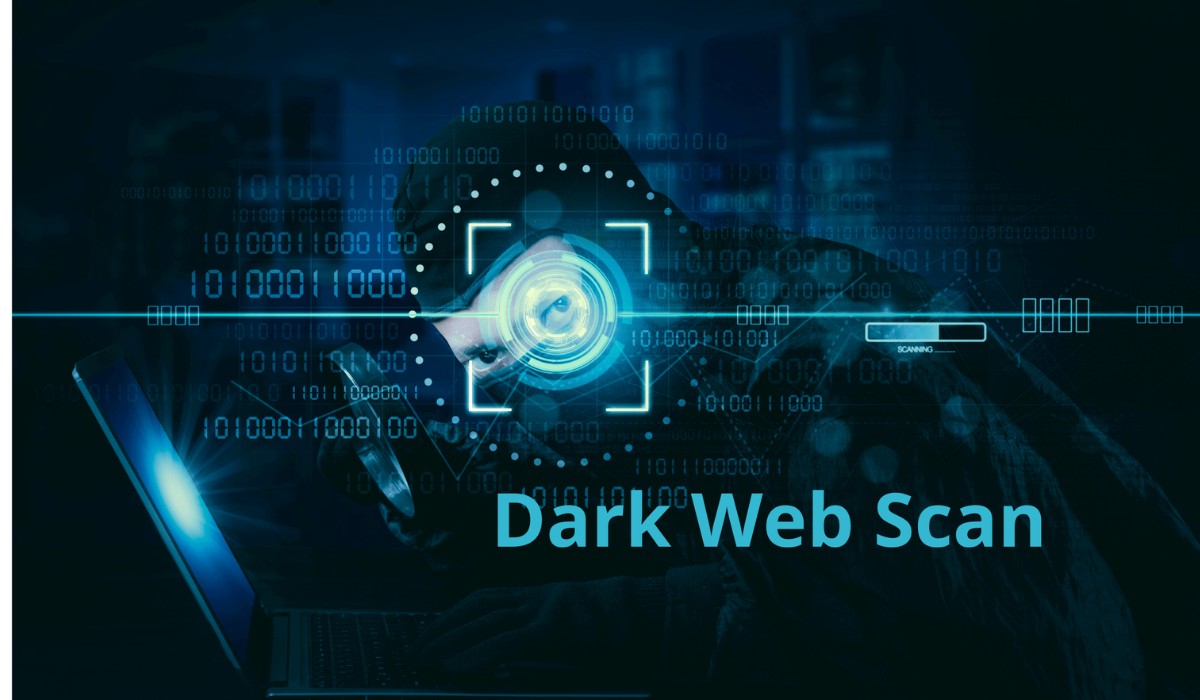Introduction
The Dark Web is a term that has gained significant attention in recent years. It is often associated with illegal activities and a hidden underworld on the internet. But what exactly is the Dark Web and why is it considered illegal? In this article, we will explore the nature of the Dark Web, how it is accessed, and the illegal activities that occur within its hidden corners.
The Dark Web refers to a part of the internet that is not indexed or easily accessible through traditional search engines like Google or Bing. Unlike the surface web, which is open and accessible to all users, the Dark Web is shrouded in anonymity and secrecy. It operates on encrypted networks that require specific software and configurations to access.
While the Dark Web itself is not inherently illegal, it has gained a notorious reputation due to the illegal activities that take place within its boundaries. These activities include the sale of drugs, weapons, counterfeit goods, cybercrime tools, and even human trafficking.
Accessing the Dark Web requires the use of specialized software such as Tor (The Onion Router). Tor allows users to browse the Dark Web anonymously by rerouting their internet connection through a series of encrypted nodes. This makes it difficult for law enforcement agencies to track the origin and destination of online activities on the Dark Web.
One of the most prominent cases that brought the Dark Web into the spotlight is the Silk Road. Operated by the notorious Ross Ulbricht, the Silk Road was an online marketplace known for trade in illegal goods and services. It was shut down in 2013 by the Federal Bureau of Investigation (FBI), leading to the arrest of Ulbricht.
While the Silk Road may have been taken down, illegal marketplaces continue to thrive on the Dark Web. These marketplaces function using cryptocurrencies like Bitcoin, which provide an additional layer of anonymity for buyers and sellers. This makes it incredibly difficult for authorities to trace the financial transactions or identify the parties involved in illegal activities.
In the next sections, we will delve into the specific illegal activities that occur on the Dark Web, the dangers associated with it, and the efforts of law enforcement agencies to combat it. Join us as we explore the dark underbelly of the internet and uncover its illegal secrets.
What is the Dark Web?
The Dark Web, also known as the Darknet, is a part of the internet that is intentionally hidden and inaccessible through traditional search engines. It is a network of websites and services that operate on encrypted networks, ensuring anonymity for its users. Unlike the surface web, which includes websites that can be easily found and accessed, the Dark Web requires specific software and configurations to enter.
The anonymity on the Dark Web is achieved through a technology called Tor (The Onion Router), which encrypts and redirects internet traffic through a series of relays. This makes it extremely difficult for anyone to trace the origin and destination of online activities on the Dark Web. While Tor was initially developed by the U.S. Naval Research Laboratory for secure communication, it has since become the go-to tool for accessing the Dark Web.
Once inside the Dark Web, users discover a hidden world of websites and forums that cater to various interests. While not all activities on the Dark Web are illegal, it has become synonymous with illicit activities due to the nature of anonymity it provides. The Dark Web has become a hub for cybercriminals, fraudsters, and individuals seeking to engage in illegal transactions.
In addition to the anonymity, the Dark Web also provides an avenue for individuals to communicate and share information without fear of surveillance or censorship. This has made it appealing to individuals living under repressive regimes or those actively involved in whistleblowing and activism.
It is important to note that the Dark Web should not be confused with the Deep Web. The Deep Web refers to parts of the internet that are not easily accessible through search engines and includes private intranets, encrypted networks, and password-protected websites. While the Deep Web is significantly larger than the surface web, the Dark Web is a smaller subset within it, dedicated to hidden and potentially illegal activities.
Overall, the Dark Web is a hidden dimension of the internet that offers anonymity and privacy to its users. While it can be used for legitimate purposes, it has gained notoriety for hosting illegal activities. In the following sections, we will explore the illegal activities that take place on the Dark Web and the challenges faced by law enforcement agencies in combating them.
How is the Dark Web accessed?
Accessing the Dark Web requires the use of specialized software and configurations to ensure anonymity and privacy. The most popular tool used to access the Dark Web is Tor (The Onion Router). Tor is an open-source software that allows users to browse the internet anonymously by directing their traffic through a network of encrypted nodes.
When a user accesses the Dark Web through Tor, their internet traffic is bounced through a series of randomly selected Tor relays. Each relay removes a layer of encryption, hence the name “The Onion Router,” before passing the traffic to the next relay. This multi-layered encryption makes it difficult for anyone to trace the origin and destination of the user’s online activities.
To access the Dark Web using Tor, a user must follow these steps:
- Download and install the Tor browser: The Tor browser is a modified version of the Mozilla Firefox browser that has the necessary configurations to access the Dark Web. It can be downloaded from the official Tor Project website.
- Connect to the Tor network: Once the Tor browser is installed, the user launches the browser and connects to the Tor network. This allows the user’s internet traffic to be routed through the Tor relays.
- Access Dark Web websites: With the Tor browser connected to the Tor network, users can now enter Dark Web addresses, also known as onion addresses, into the browser’s address bar and visit Dark Web websites.
- Take additional security precautions: While Tor provides a level of anonymity, it is important for users to take additional precautions to protect their privacy. This includes disabling JavaScript, using a VPN (Virtual Private Network), and avoiding revealing personal information.
It is crucial to note that accessing the Dark Web carries potential risks and should be approached with caution. The Dark Web is notorious for hosting illegal activities, and by accessing it, users may inadvertently encounter malicious actors or illegal content.
Moreover, not all Dark Web websites are trustworthy. Users may come across scams, malware, or fake marketplaces looking to exploit unsuspecting individuals. Engaging in any illegal activities on the Dark Web can have serious legal consequences, as law enforcement agencies actively monitor and intervene in Dark Web operations.
In the next sections, we will explore the illegal activities that occur on the Dark Web, shedding light on the dark underbelly of this hidden network.
Silk Road and the Birth of Illegal Marketplaces
One of the most infamous episodes in the history of the Dark Web is the rise and fall of the Silk Road. Launched in 2011 by Ross Ulbricht, operating under the pseudonym “Dread Pirate Roberts,” the Silk Road quickly gained notoriety as an online marketplace for illegal goods and services.
The Silk Road operated on the principle of anonymity, utilizing Tor to provide a hidden platform where users could buy and sell various illicit items. From drugs and counterfeit documents to hacking tools and weapons, the Silk Road offered a wide range of illegal products to buyers around the world.
Transactions on the Silk Road were conducted using Bitcoin, a decentralized cryptocurrency that ensured a level of anonymity for both buyers and sellers. This made it difficult for authorities to trace the financial transactions associated with illegal activities.
The Silk Road thrived for several years, attracting thousands of users and generating millions of dollars in revenue. Its success was due in part to the strict code of conduct enforced by Dread Pirate Roberts, which prohibited the sale of harmful substances such as child pornography or weapons of mass destruction.
However, the illegal nature of the Silk Road eventually caught the attention of law enforcement agencies. In 2013, the Federal Bureau of Investigation (FBI) launched an investigation into the Silk Road, leading to the arrest of Ross Ulbricht and the seizure of the website.
Ulbricht was convicted on multiple charges, including conspiracy to commit money laundering, conspiracy to commit computer hacking, and conspiracy to traffic narcotics. He was sentenced to life in prison without the possibility of parole, serving as a stark warning to those who sought to operate illegal marketplaces on the Dark Web.
The takedown of the Silk Road marked a significant milestone in the fight against illegal activities on the Dark Web. However, it did not lead to the eradication of illegal marketplaces. Instead, new marketplaces quickly emerged to fill the void left by the Silk Road.
Since the Silk Road, several notable illegal marketplaces have risen and fallen, including AlphaBay, Hansa, and Wall Street Market. The persistent existence of these marketplaces underscores the ongoing challenge faced by law enforcement agencies in their efforts to combat illegal activities on the Dark Web.
While the Silk Road and its successors have made headlines for their illicit operations, they represent only a small fraction of the Dark Web’s overall activities. The Dark Web continues to host a myriad of illegal marketplaces, making it imperative for law enforcement to remain vigilant in their fight against cybercriminals.
In the following sections, we will dive deeper into the specific illegal activities that flourish on the Dark Web, shedding light on the industries that thrive in the hidden corners of this clandestine network.
The Illegal Activities on the Dark Web
The Dark Web is notorious for hosting a wide range of illegal activities. The anonymity provided by the encrypted networks and cryptocurrencies make it an attractive platform for criminals to operate without fear of detection. Let’s explore some of the illegal activities that thrive on the Dark Web.
1. Drugs and Counterfeit Goods: One of the most prevalent illegal activities on the Dark Web is the sale of drugs. Dark Web marketplaces offer a vast selection of narcotics, ranging from marijuana and cocaine to prescription drugs. In addition to drugs, counterfeit goods, including fake passports, documents, and luxury products, are also widely available for purchase.
2. Weapons and Firearms: The Dark Web provides a marketplace for individuals seeking illegal weapons and firearms. Underground arms dealers offer a variety of firearms, ammunition, and even explosives to buyers looking to acquire these dangerous items discreetly.
3. Cybercrime and Hacking Tools: Cybercriminals take advantage of the Dark Web to sell hacking tools, malware, and stolen data. These offerings enable individuals with malicious intent to carry out cyber attacks, gain unauthorized access to systems, and engage in identity theft.
4. Human Trafficking and Illegal Services: The Dark Web serves as a platform for human trafficking networks, offering services for the smuggling and exploitation of individuals. This includes the sale of human organs, child exploitation, and forced labor.
5. Money Laundering and Fraudulent Activities: Criminals utilize the Dark Web to launder money obtained through illegal means. Money laundering services, such as disguised transfers and cryptocurrency mixing, enable illicit funds to be made untraceable. Furthermore, the Dark Web houses forums and marketplaces that provide fraudulent services, such as credit card fraud and identity theft.
These illegal activities create a toxic environment on the Dark Web, fostering a black market where criminals can conduct illicit transactions with relative ease. It is important to note that engaging in any of these activities is not only illegal but also exposes individuals to significant legal consequences.
While law enforcement agencies recognize the challenges posed by the Dark Web, they have made strides in combating these illegal activities. Investigations and operations specifically targeting Dark Web marketplaces have led to arrests, seizure of illicit goods, and dismantling of criminal networks.
However, the dynamic nature of the Dark Web presents an ongoing challenge for authorities. As one marketplace is shut down, others quickly emerge to take its place. This cat-and-mouse game highlights the need for continuous efforts to disrupt illegal operations on the Dark Web.
In the next sections, we will uncover the hidden dangers of the Dark Web and the measures taken by law enforcement agencies to confront these threats.
Drugs and Counterfeit Goods
One of the most prevalent and profitable illegal activities on the Dark Web is the sale of drugs and counterfeit goods. Dark Web marketplaces have become virtual marketplaces where buyers and sellers can engage in illicit drug transactions and procure counterfeit goods with relative anonymity.
On the Dark Web, a wide range of drugs are offered for sale, including marijuana, cocaine, heroin, MDMA, and prescription medications. These substances are sold under various aliases and brand names, often accompanied by user reviews and ratings to establish credibility and reliability. The Dark Web allows buyers to browse through listings, compare prices, and make discreet purchases from the comfort of their own homes.
The anonymity provided by the Dark Web is a major draw for drug traffickers. Buyers can communicate and negotiate with sellers using encrypted messaging platforms, while cryptocurrencies like Bitcoin are commonly used for payment, adding an additional layer of anonymity to the transactions.
In addition to drugs, the Dark Web is a hotbed for counterfeit goods. Counterfeit luxury products, including designer handbags, watches, clothing, and electronics, are readily available for purchase. These goods are usually produced with inferior materials and craftsmanship, but are sold at significantly lower prices compared to their authentic counterparts.
Counterfeit documents, such as passports, identification cards, and driver’s licenses, can also be acquired on the Dark Web. These forged documents can be used for various illegal activities, including identity theft, fraud, and illegal immigration.
The Dark Web offers a level of convenience and anonymity that facilitates the sale and purchase of these illegal products. Buyers can avoid the risks associated with traditional drug deals and counterfeit goods transactions, such as exposure to law enforcement or the possibility of receiving low-quality products.
While the Dark Web may seem like a safe haven for those involved in drug trafficking and the sale of counterfeit goods, law enforcement agencies worldwide are actively working to combat these illegal activities. Through extensive investigations and operations, authorities have successfully identified and apprehended individuals involved in these illicit operations.
Moreover, collaboration between international law enforcement agencies has led to the takedown of major Dark Web marketplaces, resulting in the disruption of drug supply chains and the seizure of millions of dollars’ worth of counterfeit goods.
However, the anonymous and decentralized nature of the Dark Web presents an ongoing challenge for law enforcement. New marketplaces and actors quickly emerge to fill the void left by those that are dismantled.
The sale of drugs and counterfeit goods on the Dark Web raises concerns beyond legal implications. The consumption of illicit substances poses significant health risks, as the quality and purity of drugs obtained through online channels cannot be guaranteed. Likewise, the purchase of counterfeit goods perpetuates a cycle of economic harm to legitimate businesses and compromises consumer safety.
In the next sections, we will explore additional illegal activities that thrive on the Dark Web, shedding light on the hidden dangers posed by this hidden realm of the internet.
Weapons and Firearms
Among the illegal activities that flourish on the Dark Web, the sale and acquisition of weapons and firearms have gained significant attention. Dark Web marketplaces have become a platform for individuals seeking access to illegal weapons that can bypass traditional legal restrictions.
The availability of weapons and firearms on the Dark Web offers a concerning avenue for criminals and individuals with malicious intent. Underground arms dealers utilize the anonymity and encryption provided by the Dark Web to offer a variety of firearms, ammunition, and related accessories.
These weapons range from handguns and rifles to more sophisticated and powerful firearms. Buyers can browse through listings, view images, and compare prices to make their selection. The Dark Web allows individuals to acquire weapons in a discreet and unregulated manner, circumventing the normal background checks and legal procedures associated with purchasing firearms.
By using the Dark Web, those with criminal intentions can obtain firearms without direct physical contact, reducing the risk of detection by law enforcement agencies. This poses a significant threat to public safety, as individuals who should not have access to firearms can easily obtain them through anonymous online transactions.
The proliferation of illegal weapons on the Dark Web is a concerning issue for societies worldwide. It makes it easier for individuals to engage in acts of violence, terrorism, and organized crime. The dark corners of the internet create a marketplace where dangerous weapons can be obtained without proper oversight or regulation.
Law enforcement agencies are aware of the challenges posed by the sale of weapons on the Dark Web. They work diligently to identify and apprehend individuals involved in these illegal operations. Coordinated efforts between international law enforcement agencies have led to successful operations resulting in the seizure of firearms and the disruption of illegal weapons trafficking networks.
However, combating the sale of illegal firearms on the Dark Web remains an ongoing battle. Criminals and potential buyers continue to adapt to changing circumstances, seeking new avenues to carry out their illicit activities.
It is important to note that the sale and possession of firearms through the Dark Web is not only illegal but also extremely dangerous. These transactions can have severe consequences not only for those directly involved but also for innocent individuals who may be affected by the misuse of these weapons.
Efforts to reduce the availability of firearms on the Dark Web require collaboration between law enforcement agencies and technology companies. Stricter regulations, improved tracking mechanisms, and enhanced cooperation are necessary to address this pressing issue.
In the following sections, we will explore other illegal activities that thrive on the Dark Web, shedding light on the hidden dangers posed by this hidden realm of the internet.
Cybercrime and Hacking Tools
The Dark Web has become a thriving marketplace for cybercriminals, offering a wide array of hacking tools, malware, and stolen data. With the increasing interconnectedness of our digital world, the demand for cybercrime-related tools and services has risen significantly, and the Dark Web caters to this demand.
On the Dark Web, hackers and cybercriminals can find and purchase a range of hacking tools and services that enable them to engage in illegal activities. These tools include exploit kits, remote access Trojans (RATs), keyloggers, and zero-day vulnerabilities, among others. These tools provide attackers with the means to infiltrate systems, steal sensitive data, and carry out various cyber attacks.
The availability of these tools on the Dark Web allows individuals with minimal technical knowledge to engage in cybercriminal activities. They can purchase ready-to-use tools or hire experienced hackers to carry out attacks on their behalf. This underground marketplace allows cybercriminals to thrive, taking advantage of the anonymity and encryption provided by the Dark Web.
In addition to hacking tools, the Dark Web is a source of stolen data and personal information. Cybercriminals sell databases of stolen credentials, credit card information, and even hacked social media accounts. This data can be instrumental in carrying out identity theft, financial fraud, and other malicious activities.
The Dark Web also serves as a hub for discussion forums and communities where like-minded individuals share knowledge and collaborate on cybercrime-related endeavors. These forums provide a space for individuals to learn from each other, share tips and techniques, and even offer specialized services like cracking passwords or launching distributed denial-of-service (DDoS) attacks.
Law enforcement agencies work tirelessly to combat cybercrime on the Dark Web. They employ various tactics, such as undercover investigations and international collaboration, to disrupt and dismantle cybercriminal networks. However, the anonymity and geographical dispersion of actors on the Dark Web make it a challenging terrain to navigate.
Addressing cybercrime on the Dark Web requires ongoing efforts from both law enforcement agencies and cybersecurity professionals. It necessitates the development of robust defensive measures, improved information sharing, and public awareness campaigns to educate individuals about the risks and best practices for staying safe in the digital realm.
The presence of cybercrime and the availability of hacking tools on the Dark Web highlight the critical need for robust cybersecurity measures. Individuals and organizations must remain vigilant and implement appropriate security practices to protect themselves from cyber threats.
In the next sections, we will delve into other illegal activities that thrive on the Dark Web, shedding light on the hidden dangers posed by this clandestine network.
Human Trafficking and Illegal Services
Human trafficking is a pervasive and devastating crime that finds a disturbing space on the Dark Web. This hidden corner of the internet provides a platform for individuals and criminal organizations to engage in the illegal trade of human beings.
The Dark Web offers a range of services related to human trafficking, including the sale of individuals for forced labor, sexual exploitation, and organ trafficking. Underground websites on the Dark Web advertise and facilitate these heinous activities, often employing coded language and pseudonyms to avoid detection.
Human trafficking networks take advantage of the anonymity and encryption provided by the Dark Web to conduct their operations. They use encrypted messaging platforms and cryptocurrencies to communicate and facilitate transactions, further safeguarding their illegal activities.
Aside from human trafficking, the Dark Web is home to various other illegal services. These range from hitmen-for-hire, contract killers, and mercenaries, to services for document forgery, fake passports, and counterfeit identification.
The existence of these illegal services on the Dark Web enables criminals to carry out their activities away from the prying eyes of law enforcement agencies. It creates an environment where exploitation and harm can occur with minimal risk of detection or interruption.
Combatting human trafficking and illegal services on the Dark Web is an immense challenge for law enforcement agencies. However, they are not idle in their efforts to dismantle these networks. International collaborations and specialized task forces work tirelessly to identify and apprehend those engaged in such heinous crimes.
Efforts to counter human trafficking and illegal activities require a multi-faceted approach. This includes raising awareness, strengthening legislation, providing support to victims, and enhancing cooperation between law enforcement agencies across borders.
Public awareness and education are critical in the fight against human trafficking. By understanding the realities and signs of human trafficking, individuals can be vigilant and report suspicious activities to the proper authorities.
Organizations and government bodies also play an important role in addressing human trafficking and illegal services on the Dark Web. They must collaborate to develop stricter regulations, implement technology solutions, and provide resources to support law enforcement efforts.
The presence of human trafficking and various illegal services on the Dark Web serves as a stark reminder of the depths of criminality that can exist in hidden realms of the internet. By shining a light on these issues, we can work towards eradicating the illicit activities that cause immeasurable harm to individuals and communities.
In the following sections, we will continue to explore other illegal activities that thrive on the Dark Web, uncovering the magnitude of the challenges faced by law enforcement agencies in their efforts to combat these hidden dangers.
Money Laundering and Fraudulent Activities
The Dark Web serves as a haven for money laundering and various fraudulent activities. Criminals exploit the anonymity and encryption provided by the Dark Web to carry out illicit financial transactions and engage in fraudulent schemes that span across international borders.
Money laundering refers to the process of disguising the origins of illegally obtained funds, making them appear legitimate. On the Dark Web, money laundering services are available, allowing criminals to transform their illicit funds into clean and untraceable assets. These services often involve complicated financial transactions, multiple layers of transfers, and the use of cryptocurrencies to further obscure the origin and destination of the funds.
Moreover, the Dark Web is a marketplace for various fraudulent activities. Criminals can purchase stolen credit card information, bank account details, and personal identities to carry out financial fraud. This includes unauthorized purchases, identity theft, and other forms of fraudulent transactions.
Phishing kits, card skimmers, and hacking tools are also available on the Dark Web, enabling individuals to engage in cyber fraud. These tools and services are designed to deceive unsuspecting victims into revealing sensitive information, such as login credentials or financial account details.
In addition to financial fraud, the Dark Web is home to other forms of fraudulent activities, such as online scams, pyramid schemes, and Ponzi schemes. Criminals create deceptive websites or forums, offering false promises, investments, or exclusive deals to lure innocent individuals into parting with their money.
The Dark Web provides a convenient platform for criminals to conduct these fraudulent activities, shielding their identities and making it difficult for authorities to trace the money or identify the perpetrators. The use of cryptocurrencies further complicates the tracking of financial transactions, making it challenging to retrieve stolen funds or hold individuals accountable.
Law enforcement agencies are continuously working to combat money laundering and fraudulent activities on the Dark Web. Through undercover operations, digital forensics, and cross-border collaborations, they strive to disrupt criminal networks and bring perpetrators to justice.
The fight against money laundering and fraud requires a multi-pronged approach. Governments and financial institutions must strengthen regulations, enforce Know Your Customer (KYC) and Anti-Money Laundering (AML) procedures, and improve mechanisms for identifying and reporting suspicious financial activities. Additionally, public awareness campaigns and education on safe online practices can help individuals protect themselves from falling victim to various scams and frauds.
By addressing money laundering and fraudulent activities on the Dark Web, we can minimize the harm caused to individuals, businesses, and the overall financial system. Ongoing efforts are needed to stay one step ahead of the ever-evolving techniques employed by criminals in the digital realm.
In the next sections, we will continue to explore other illegal activities that thrive on the Dark Web, highlighting the complex challenges faced by law enforcement agencies in their pursuit of justice.
The Hidden Dangers of the Dark Web
While the Dark Web provides anonymity and a platform for illegal activities, it is not without its hidden dangers. The veil of secrecy that shrouds the Dark Web creates an environment where criminals can operate and thrive, posing risks to individuals, businesses, and society as a whole.
One of the primary dangers of the Dark Web is the exposure to illicit and harmful content. Users who navigate the Dark Web may unknowingly encounter explicit materials, violence, and other disturbing content that can have a detrimental impact on their well-being. This is particularly concerning for vulnerable individuals, such as children and those seeking help or guidance.
Another significant danger lies in the potential for online scams and frauds. Dark Web marketplaces offer a range of fraudulent products and services that prey on unsuspecting individuals. Scammers utilize false identities, deceptive websites, and counterfeit goods to defraud victims of their money or personal information.
Moreover, engaging in illegal activities on the Dark Web can have severe legal consequences. Law enforcement agencies actively monitor and investigate activities on the Dark Web, pursuing those involved in drug trafficking, cybercrime, human trafficking, and other illegal ventures. It is crucial to recognize that the cloak of anonymity provided by the Dark Web does not guarantee invincibility from prosecution.
Furthermore, the Dark Web presents a significant cybersecurity threat. Websites and forums on the Dark Web may host malicious content, malware, or hacking tools that can compromise the security of users’ devices. Individuals who access the Dark Web put themselves at risk of becoming victims of cyber attacks, identity theft, or having their personal information exposed.
Additionally, the Dark Web fuels the growth of underground economies and criminal networks. The profits generated from illegal activities on the Dark Web are often used to fund organized crime, terrorism, and other nefarious endeavors. This perpetuates a cycle of criminality that poses a threat to the safety and stability of society as a whole.
It is essential to approach the Dark Web with caution and a strong sense of responsibility. Individuals must understand the potential dangers and risks associated with its clandestine nature. Education and awareness about the Dark Web’s dangers can help individuals make informed decisions and take necessary precautions to protect themselves from harm.
Law enforcement agencies face an uphill battle in monitoring and combating the hidden dangers of the Dark Web. Collaboration between international agencies, advancements in technology, and public cooperation are crucial in the ongoing efforts to address the challenges posed by the Dark Web.
In the following sections, we will delve deeper into the efforts of law enforcement agencies to combat illegal activities on the Dark Web, shedding light on the complexities and successes in the fight against these hidden dangers.
Law Enforcement Efforts Against the Dark Web
The rise of illegal activities on the Dark Web has prompted law enforcement agencies worldwide to take action. Authorities are actively engaged in efforts to combat the illicit operations, disrupt criminal networks, and hold perpetrators accountable for their actions.
Law enforcement agencies employ various strategies and techniques to tackle the challenges posed by the Dark Web. They conduct undercover investigations, monitor online activities, and employ advanced digital forensics to gather evidence and identify individuals involved in illegal activities.
International collaboration is a vital component of law enforcement efforts against the Dark Web. Agencies from different countries partner together to share intelligence, exchange information, and coordinate operations. This collaboration is crucial to disrupt global criminal networks that transcend geographical borders.
In addition to proactive investigations, law enforcement agencies focus on dismantling Dark Web marketplaces and forums. They employ tactics such as targeting the administrators and operators, seizing servers, and blocking access to these illicit platforms. Operations against prominent marketplaces like the Silk Road, AlphaBay, and Hansa have resulted in significant disruptions and arrests.
Technological advancements play a crucial role in supporting law enforcement efforts. Digital forensics tools, data analysis techniques, and artificial intelligence algorithms assist in the identification, tracking, and monitoring of individuals involved in illegal activities on the Dark Web. Collaboration with technology companies and cybersecurity experts helps in developing innovative solutions and staying one step ahead of cybercriminals.
Education and public awareness campaigns are also essential in aiding law enforcement efforts. By educating the public about the risks associated with the Dark Web and providing guidance on how to stay safe online, authorities empower individuals to make informed decisions and report suspicious activities. This collaboration between law enforcement and the public serves as a powerful force in identifying and combating illegal operations.
While law enforcement agencies have made significant strides in curbing illegal activities on the Dark Web, it remains an ongoing challenge. The dynamic nature of the Dark Web requires constant adaptation and innovation by law enforcement to stay ahead of the evolving tactics employed by cybercriminals.
Furthermore, the global nature of the Dark Web presents jurisdictional hurdles and legal complexities. Cooperation among countries, sharing resources and expertise, is crucial for effective enforcement across borders. Legislative reforms and international agreements play a vital role in providing a legal framework to combat illegal activities on the Dark Web.
Efforts to combat the Dark Web require a multi-faceted approach, involving collaboration between law enforcement agencies, technology companies, and the public. Continuous research, investment in resources, and the development of innovative strategies are essential in the ongoing fight against the hidden dangers of the Dark Web.
In the next sections, we will delve deeper into the successes and challenges faced by law enforcement agencies in their endeavors to ensure the safety and security of the online world.
Conclusion
The Dark Web, with its cloak of anonymity and encrypted networks, has become a breeding ground for illegal activities. From drug trafficking and the sale of counterfeit goods to human trafficking, cybercrime, and money laundering, the Dark Web hosts a range of illicit operations that pose significant risks to individuals and society.
Law enforcement agencies have taken proactive measures to combat the hidden dangers of the Dark Web. Through international collaborations, undercover operations, and technological advancements, authorities strive to disrupt criminal networks and hold individuals accountable for their illegal activities.
However, the dynamic and complex nature of the Dark Web presents ongoing challenges for law enforcement. The constant emergence of new marketplaces, the ever-evolving techniques of cybercriminals, and the difficulties in maintaining jurisdiction across borders make it essential for continued efforts and innovative approaches.
Public awareness and education about the risks of the Dark Web play a crucial role in this fight. By understanding the hidden dangers, individuals can take precautions to protect their online activities and report suspicious behavior to the appropriate authorities.
Collaboration between law enforcement agencies, technology companies, and the public is key to success. Sharing intelligence, developing advanced tools and techniques, and fostering a culture of reporting and responsible online behavior contribute to the ongoing battle against illegal activities on the Dark Web.
Ultimately, the pursuit of a safer online environment requires a multi-faceted approach that involves strong legislation, international cooperation, robust cybersecurity measures, and continuous vigilance of users.
As technology advances, so do the tactics and strategies employed by criminals on the Dark Web. It is a constant race between law enforcement and cybercriminals, and only by staying proactive, adaptive, and collaborative can society hope to mitigate the risks and protect individuals from the hidden dangers of the Dark Web.
A safer online world is possible, but it requires the collective efforts of governments, law enforcement, technology companies, and individuals to remain vigilant, informed, and committed to the fight against the illicit activities that thrive in the depths of the Dark Web.

























